Prepared by Tansy Bliss (Kaitiaki Ranger PMNT) in collaboration with Anne Schlesselmann (MWLR Project Co-ordinator/Researcher – Conservation Ecology) and Emma Williams (DOC Project Manager/Science Advisor) – January 2023
Manaaki Whenua | Landcare Research (MWLR) and the Department of Conservation (DOC) have formed a research partnership to help provide positive conservation outcomes for threatened species that migrate within New Zealand.
The Tōrea, South Island Pied Oystercatcher has been selected as a case study and Pūkorokoro Miranda Naturalists’ Trust (PMNT) and BirdsNZ have linked with DOC in helping catch and band birds in their wintering grounds in the North and Upper South Island. MWLR have been the key players in looking at what is happening in the breeding grounds in the South Island. The breeding study area is focused around the Upper Rangitata Valley, braided river system and adjacent farmland.
From the Breeding Grounds
During the last three breeding seasons 20/21, 21/22 and 22/23 Manaaki Whenua have monitored a total of 237 nests and banded 93 adults with Orange flags with three number/letter codes, and 110 fledglings with Orange flags with two number codes.
| Rangitata | ORANGE flags |
37 of the adults had solar powered GPS tags fitted along with their orange flag as did 30 juveniles. These GPS units will provide more detailed movement and survival data.
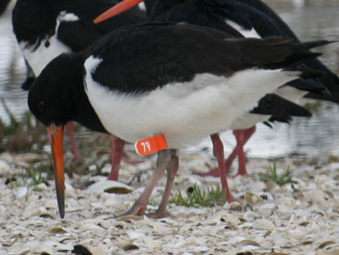
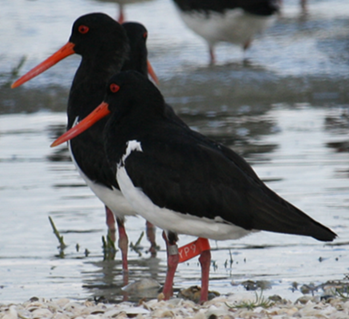
Since Jan 2023, three flagged birds, juveniles 59 & 60 and adult YU0 have already been sighted here at Pūkorokoro on the mud flats in front of the Kuaka and Wrybill hides, by the Limeworks and down at the Taramaire Stream mouth.
So, check the flock for Orange flags and aerials, these birds are from the Rangitata.
Update from the Non-breeding / Overwintering Grounds
DOC in conjunction with PMNT and BirdsNZ have also been catching and banding Tōrea in their non-breeding grounds. To identify the area where the birds have been caught, they have been banded with various coloured flags.
| Tīkapa Moana / Firth of Thames | RED flags |
| Nelson / Golden Bay | YELLOW flags |
| South Island (excluding Nelson and Rangitata) | BLUE flags |
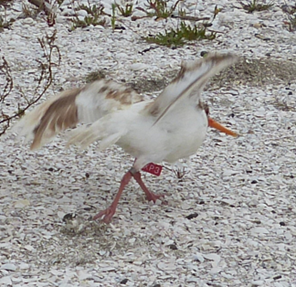
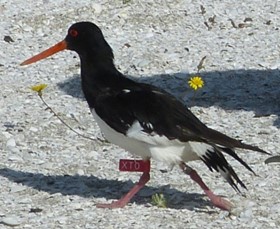
In the Firth of Thames, catching and banding has taken place at Taramaire stream mouth during the annual field courses during January 2021 and January 2023. A total of 240 flags have been fitted to Tōrea. In addition, a special cannon netting session was held in June 2021 at Kuranui Bay, Thames when 114 birds were caught and fitted with flags. Twenty-two were also fitted with GPS units. There are more details about this event in the PM News Issue 121, August 2021.
Special Note
One leucistic (pale/white/brown feathered) Tōrea was caught in January 2023 and now carries the flag identification XP3. Two other leucistic Tōrea have been seen in the Firth of Thames flocks in the 2022/23 season. These birds are more white and black, so look for the pale brown plumage and the red flag to identify XP3.
Note: Leucistic birds are different from albino birds where the eye, bill and legs are also pale. Leucism is caused by an absence of cells that produce melanin or a reduced production of melanin which normally gives the feathers their colours.
Sightings
The red flags can either have two letters on them, or 2 letters and a number. Anything that looks like an O is in fact a zero. Flags can be on either leg, so it is worth scanning the flock a couple of times as they shuffle around and change which leg they are roosting on.
There could be up to 354 red flags out there, so there should be plenty of opportunity to spot one from the birdhides on the Robert Findlay Reserve or at the Taramaire stream mouth.
Scan the flock for red flags with two white letters and a number, or just two white letters. These birds were caught here.
The Migration of the Tōrea
The adults start breeding down on the braided rivers and farmland mainly between September and November. Nests usually have 2-3 eggs and chicks hatch after a 24-28 day incubation period. Just after hatching, the chicks are at their most vulnerable and again when about to fledge at approximately 6 weeks old.
As with the godwits, the adults and fledglings appear to migrate separately. The fledglings may check out a few different wintering sites, so just because we have seen juveniles 59 and 60 here in 2023, they could move on elsewhere and they may not make this their favoured wintering site. During their first two years the juveniles appear to make exploratory flights over several hundreds of kilometres stopping at different sites such as Golden Bay in the South Island and Firth of Thames in the North Island. They will settle to breed at 3-4 years old.
The northward migration route looks to be straight across the Southern Alps and north either inland or seaward of Mount Taranaki if heading to the Kaipara, Auckland Harbour, Firth of Thames, Coromandel and Bay of Plenty.
The southward migration so far does not seem to differ greatly. However, as more information comes in from the satellite tags/GPS units and flag readings, there will be better knowledge on their chosen routes.
The maps below show the north and south migration routes of YU0 who was carrying a satellite transmitter and the juvenile 60 sighted at the Godwit hide. (Maps courtesy of Manaaki Whenua, Anne Schlesselmann).
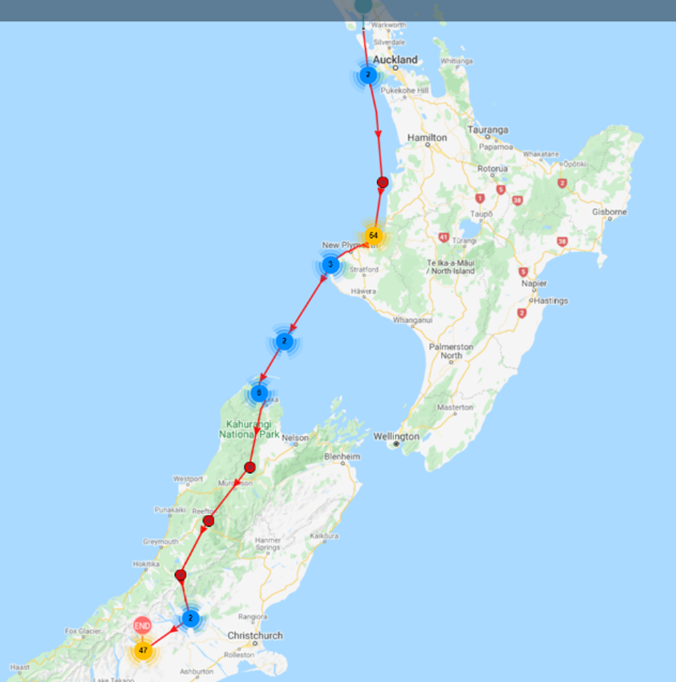
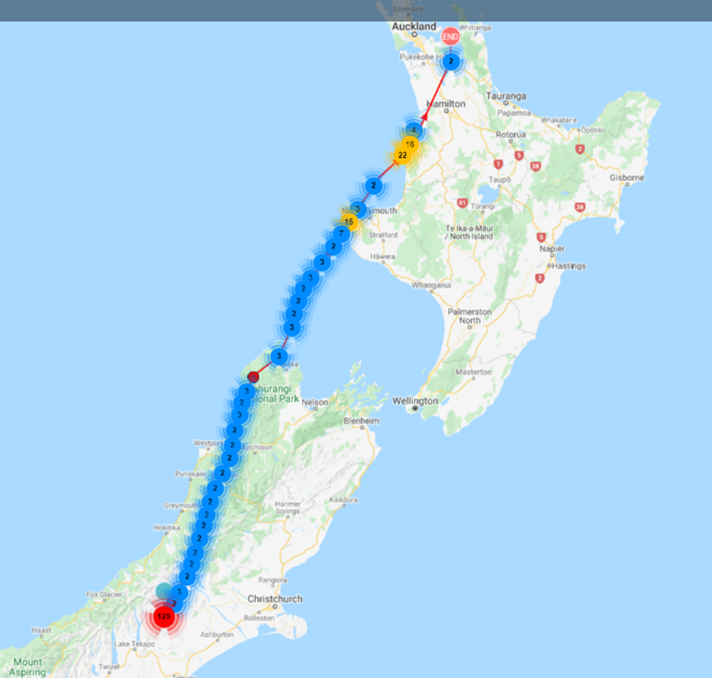
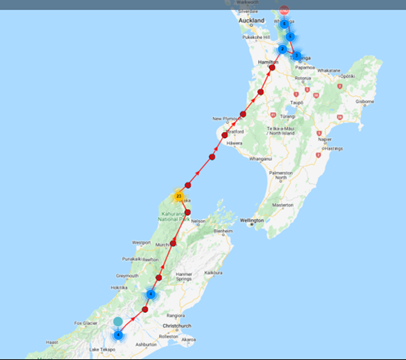
Reporting your Sightings
If you sight a tōrea, or any other banded bird in New Zealand, you’ll need to record a few details.
- Date and time
- Species
- Where you were
- Colour of the flag/bands
- Any engravings on flags
- Which legs the bands/flags are on
You can enter your sightings directly into the Department of Conservation FALCON Bird Banding system.
All sightings help with the continued study and research of our precious manu.
